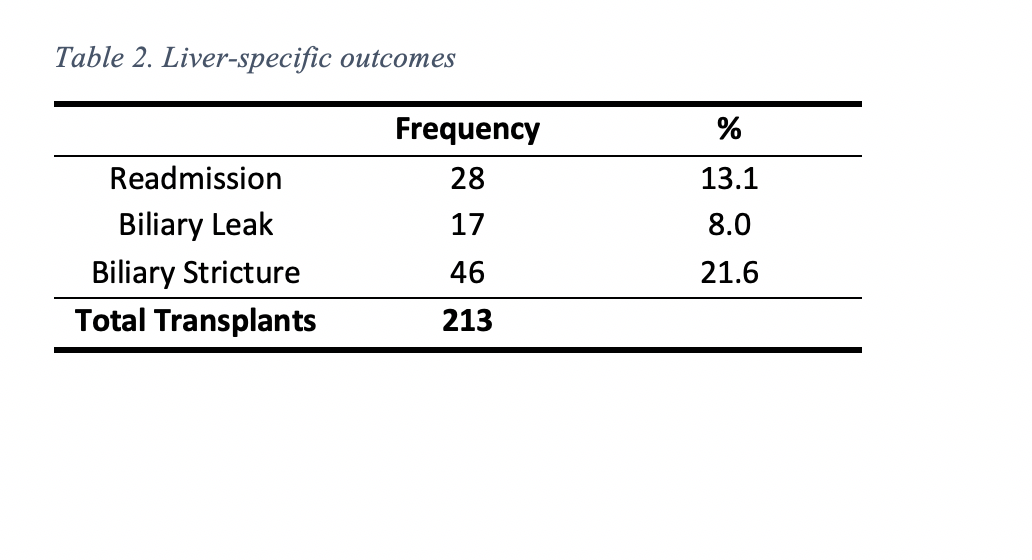Initial Single-Center Results from the Pilot Transplant Quality Improvement Project in Liver Transplant
UC San Francisco, San Francisco, CA
Meeting: 2019 American Transplant Congress
Abstract number: D10
Keywords: Liver transplantation, Outcome, Post-operative complications
Session Information
Session Name: Poster Session D: Quality Assurance Process Improvement & Regulatory Issues
Session Type: Poster Session
Date: Tuesday, June 4, 2019
Session Time: 6:00pm-7:00pm
 Presentation Time: 6:00pm-7:00pm
Presentation Time: 6:00pm-7:00pm
Location: Hall C & D
*Purpose: The National Surgical Quality Improvement Program (NSQIP) has been an effective measure in improving the quality of surgical care, while also providing data to aid the reduction of complications and costs. Multiple databases exist in transplant surgery, however there is no comprehensive national program for QI. The Transplant Quality Improvement Project (TransQIP) utilizes trained clinical reviewers to prospectively collect accurate data in multiple defined categories of interest.
*Methods: Review of single-center prospectively collected TransQIP pilot data from 213 liver transplants performed between February 2017 to June 2018. Descriptive statistics for all patients were analyzed, along with readmission and biliary complication data utilizing univariate and logistic regression analysis.
*Results: Mean age and MELD at time of transplant were 57.0 and 32.0, respectively. 64.8% of patients were males, 50.7% of transplants were for HCC, and 89.2% of transplants were performed via a piggyback technique. Living donors made up 17.4%, partial livers 19.7%, and DCD donors 12.7% of all transplants. Readmission rates were 13.1%, biliary leak was seen in 8.0%, and biliary stricture was seen in 21.6% of patients. Fisher’s exact test revealed biliary strictures (p < 0.01) and biliary leak (p < 0.01) were associated with partial liver grafts. Multivariate logistic regression revealed that only partial liver grafts had an increased odds of biliary leaks (p < 0.01, OR = 4.4, 95% CI: 1.5 - 12.8) and biliary strictures (p < 0.01, OR = 2.7, 95% CI: 1.3 - 5.7). DCD livers were not independently associated with biliary stricture (p = 0.6).
*Conclusions: Our TransQIP data shows that partial liver grafts are associated with biliary complications. The majority of these grafts were from living donors. TransQIP will provide an important comprehensive data source for transplant centers, as it contains strictly defined recipient, donor, and outcome variable data. Future analysis of longitudinal multicenter data collected can provide information to help improve care delivery and outcomes of transplant patients. Future additional transplant center involvement and increased patient data will allow TransQIP to be better equipped to impact quality improvement.
To cite this abstract in AMA style:
Zarinsefat A, Syed SM, Hirose R. Initial Single-Center Results from the Pilot Transplant Quality Improvement Project in Liver Transplant [abstract]. Am J Transplant. 2019; 19 (suppl 3). https://atcmeetingabstracts.com/abstract/initial-single-center-results-from-the-pilot-transplant-quality-improvement-project-in-liver-transplant/. Accessed December 19, 2025.« Back to 2019 American Transplant Congress


